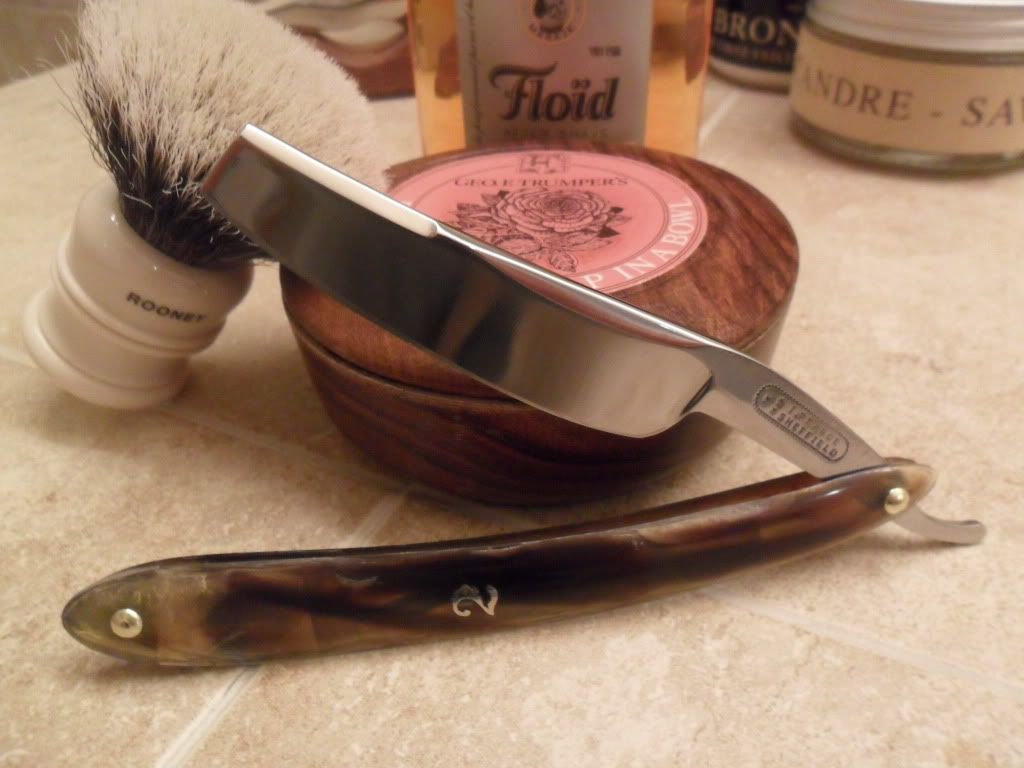Results 1 to 5 of 5
-
12-19-2011, 07:25 AM #1
 Anyone ever see a Greaves like this?
Anyone ever see a Greaves like this?
I got this the other day but hadn't really examined it yet. The scales were badly cracked at the pin which is why the blade is... Sans-pants, as it were.
I've got a Joseph Elliot with the same style blade and Lummus shows a Marshes & Shepherd, but I've never seen a Greaves. Adding to my curiosity, there's the faint hint of a fancy blade etch (just barely visible in the second picture), but I can't make it out at all.
Edited to add:
My cellphone picture doesn't make entirely clear, the blade has a pretty good taper to it. It goes from a solid 7/8 at the heel down to a 5/8 at the toe, and it's not hone wear. The blade was designed with that taper.Last edited by Voidmonster; 12-19-2011 at 07:29 AM. Reason: Clarification on blade shape
-Zak Jarvis. Writer. Artist. Bon vivant.
-
12-19-2011, 07:40 AM #2

And here's a comparison shot to the other Greaves I'm working on (a much more typical 7/8 wedge with a reground toe).
-Zak Jarvis. Writer. Artist. Bon vivant.
-
12-21-2011, 03:28 PM #3

I have one just like it wonderful shaver
link to pics is here:
http://straightrazorpalace.com/custo...eaf-works.html
-
The Following User Says Thank You to jeg227 For This Useful Post:
Voidmonster (12-21-2011)
-
12-21-2011, 03:55 PM #4

During the late 1830s this style of blade was made. They are not too common and often can be first thought that someone had a heavy hand honing the toe. They were only made in this style for a couple years and are pretty rare to see, but owning one that came to me with no hone wear I can say that this is how they were styled (and Lummus mentions this in his article).
Here is my I.Pearce that measures 13/16 at the heel and 9/16 at the toe. This one is actually directly out of Lummus' collection.

-
12-21-2011, 05:40 PM #5

Aha! That must be in the second Lummus article. I've yet to find a copy of that one with legible photos. Quite a find there!
I knew they had to be late 1830's at the earliest since at least one of the other blades I've seen in that style has a VR stamp.
When I fix up this one I've got I'm going to do everything I can to preserve the etching on the blade, which appears to be identical to all known etchings on these 'An Excellent Razor'. After coating the blade in Naval Jelly for 20 minutes or so, not only was some of the worst of the rust gone but I was able to see the etch better by sanding off the acid-black with 1200 grit.
I'm really looking forward to shaving with one of these!-Zak Jarvis. Writer. Artist. Bon vivant.


 2Likes
2Likes LinkBack URL
LinkBack URL About LinkBacks
About LinkBacks







 Reply With Quote
Reply With Quote
